With more than 17 years in the visual effects industry, Chris Connolly has built an impressive portfolio. As a VFX supervisor, his expertise has shaped projects like Hold the Dark, Hunters, The Undoing, and Succession.
What is your background?
I went to film school, and after college I started working as an Assistant Editor in Commercials and TV. I worked my way up to Editing and Online Editing, where I did a little bit of VFX, Color, and Editing. As I freelanced, I started to take on projects in each of these disciplines and was able to find more time to work on independent films as well.
So I sort of came up in the indie film world and post production, and over the years I dove more into visual effects. At this point, I’ve been working as a VFX Supervisor for about 10 years.
How did you get involved on this movie?
Jeremy and I go way back, and we’ve collaborated on many projects over the years. I’ve also worked with his producers on other films and really enjoy working with them as well. I knew Jeremy had a new script, so the project was already on my radar. When it was greenlit, I started to break down the script and dive right in.
How was this new collaboration with director Jeremy Saulnier?
It was great. Our tastes are pretty similar, and Jeremy often has a clear idea of what he’s aiming for. So it was easy and fun to align creatively. Early on we talked over scenes and did some previs, which helped explore how scenes might be shot and served as visual references for crew discussions.
Jeremy loves practical effects, whether that be stunt work, special effects, special effects makeup, etc. He also understands what VFX can bring to the table. So practical elements often served as anchors for shots, and we would integrate VFX to help build the overall effect. I think this also enabled us to “aim high” for other challenging practical effects. Some of these effects worked perfectly in-camera, and others were very close and just needed a little VFX enhancement.
In post, we also used VFX to help polish the edit. We adjusted timing through fluid morphs, split screens, and merging takes. We also worked together to enhance action, reposition actors, and embellish visual elements. Sometimes Jeremy had a specific shot request, and other times we discussed the challenge and came up with a temp VFX solution.
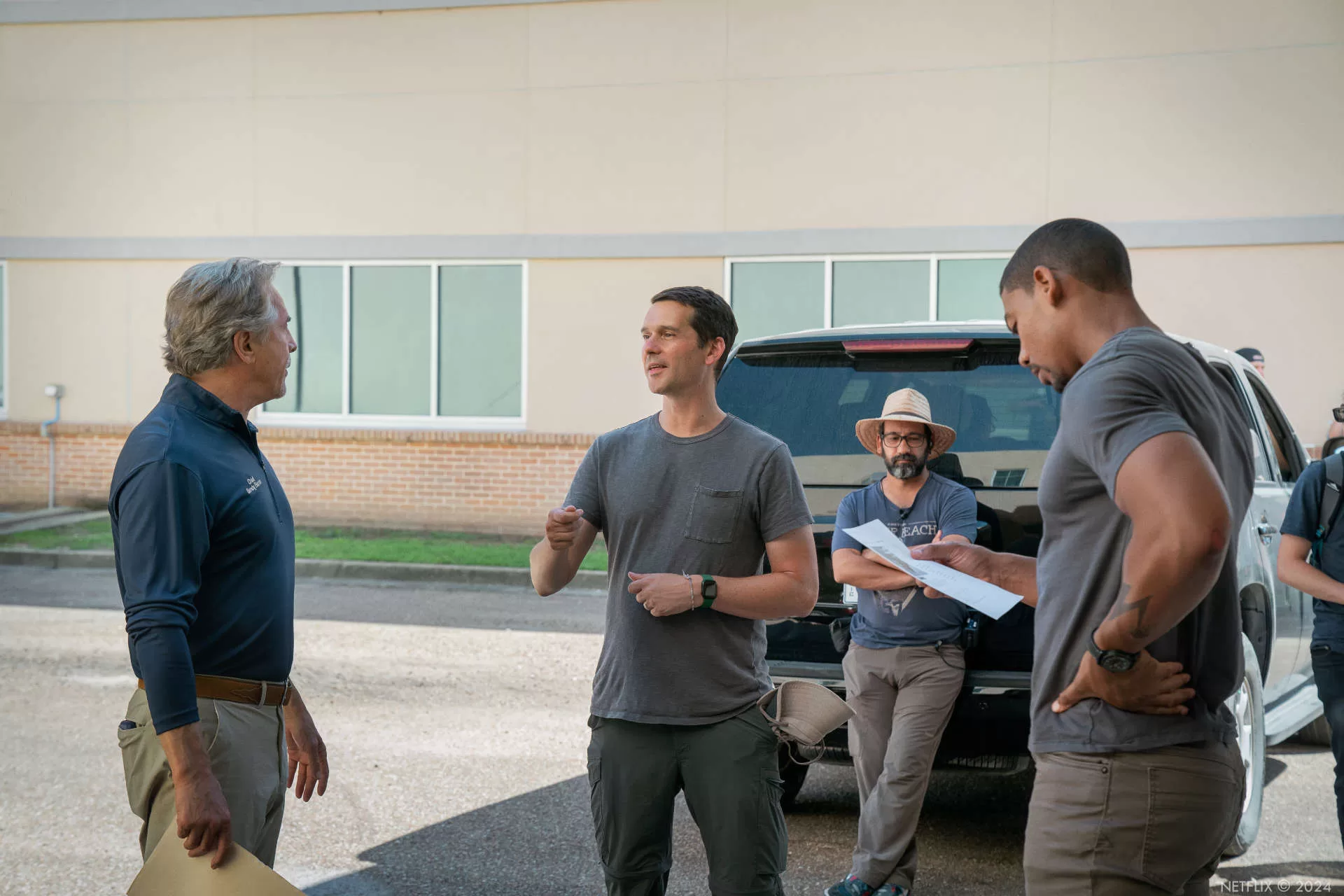
Cr. Allyson Riggs/Netflix © 2024.
How did you choose the various vendors and split the work amongst them?
It was a mix of vendors I’ve worked with in the past and some new recommendations as well. You always try to settle on which team might be a good fit for a scene and then balance that with workload, schedule, and budget. I would discuss strategies and sort out the puzzle with our VFX Producer, David or Eliav.
I was confident we would get great quality work with Phosphene and Zoic Studios on board, and I knew some of the talented team members working at Crafty Apes and Chicken Bone. BOT and Incessant Rain also came through in the final stretch with some solid work too.
I was also a bit spoiled with an incredibly talented in-house VFX team. They were senior artists that could knock out VFX temps, burn through simple fixes, or final challenging shots. This gave us some great flexibility in fitting in all the work that we wanted to do.
What is your role on set and how do you work with other departments?
During the shoot, I was usually next to the monitor – close to Jeremy and the Camera Dept. I would collaborate with departments to shoot plates in a way that would work well for VFX. I did hop away from set at times to shoot elements with a skeleton crew, photograph something we might need, or plan an upcoming setup with another Dept. Head.
I think I collaborated with almost every department at one point or another, and they were all pretty great. We discussed what we could ahead of time and figured out other solutions along the way. Other departments also jumped in to help me avoid small VFX fixes in some shots. It goes both ways too, and I helped weigh when a VFX fix might be the best solution so we could keep shooting.
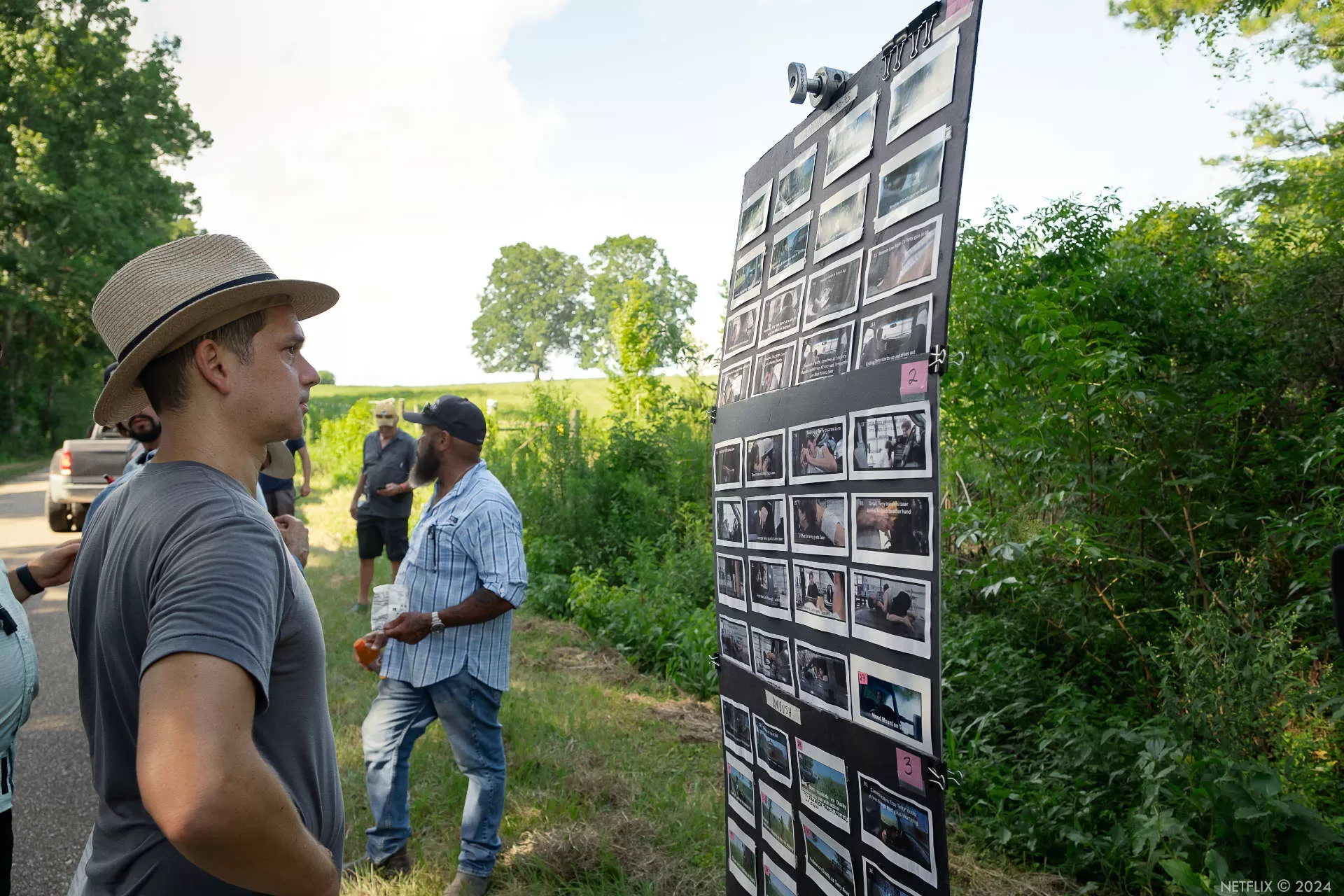
Can you describe the process of creating invisible visual effects?
We tried to use as much “what’s real” or organic in the shot as possible, then work on the invisible seams while keeping an eye on lighting, movement, and defocus levels. We shot specific element plates for comping into certain shots, and sometimes we dug through footage and stole elements from other setups.
With the retimes and fluid morphs, sometimes you can hide the morph in a quick movement, but other times you might need a slow, subtle morph. It can be a delicate balance, especially with actors in the shot. You always want to protect the artistry of their performance and make sure everything feels natural.
Some of our more complex invisible effects involved combining multiple hero plates that had moving cameras. For these, we used a combination of 3D tracking, projection, morphing, and 2D cleanup.
How did you collaborate with the director and other departments to ensure these effects seamlessly integrated into the film?
One example is the steadicam oner where Summer and Ken walk through the Chinese restaurant. The restaurant is a real location, but the office is a set. I chatted with Jeremy and the Art Dept. about what we might need to build to blend the two sides. I discussed the blue screen with the Grip Dept, and colors for the actors’ wardrobe with the Costume Dept. I also asked our DP and Gaffer about the best way to keep the lighting consistent on the actors and sets across the two locations.
On the day, I worked with Jeremy and our DP to figure out the camera movement and actor timing. We used a witness cam on the A side to help align the steadicam op and actors on the B side. We then collaborated with the AD to shoot multiple plates and photogrammetry of the set to get everything we needed.
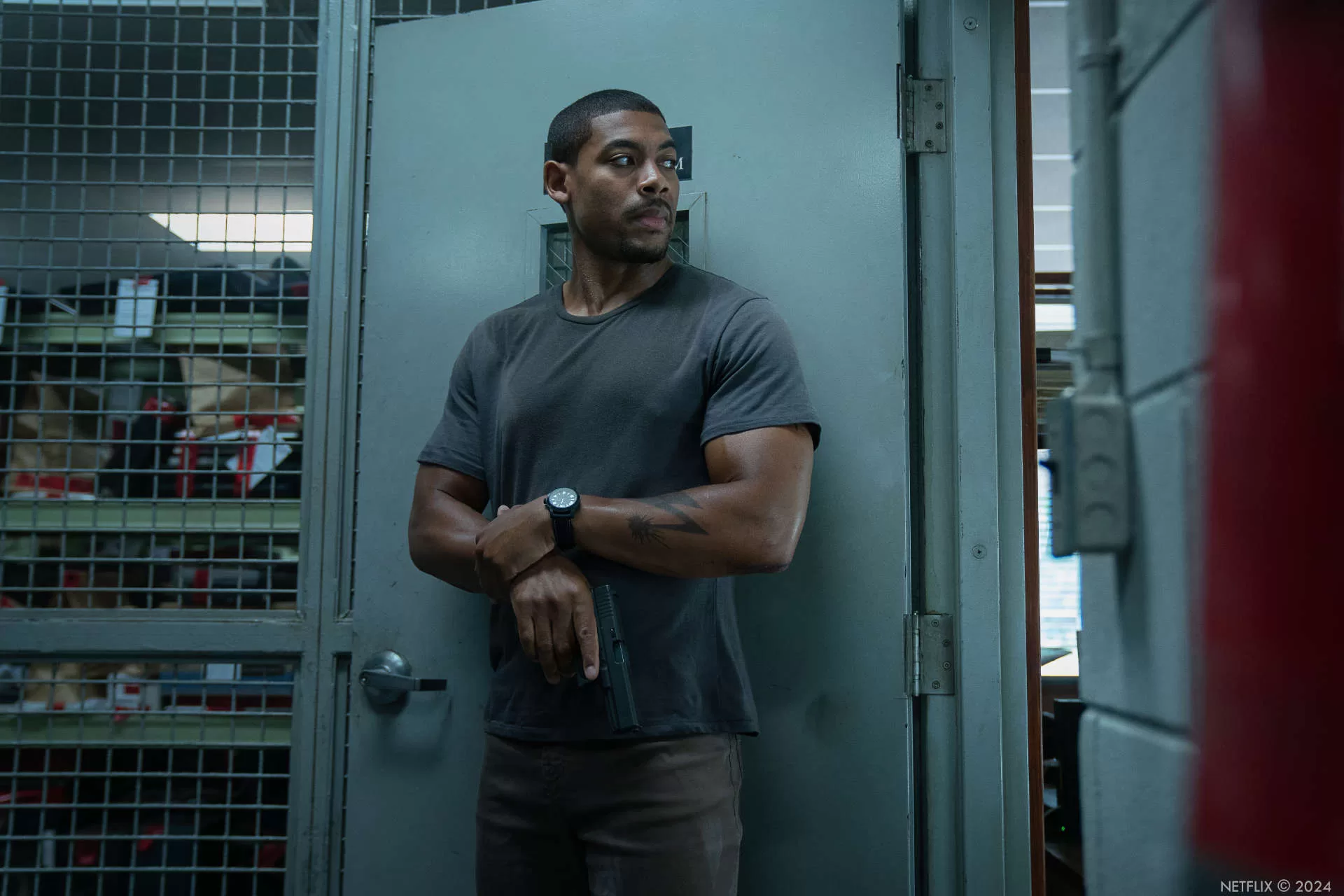
What types of visual effects were used in “Rebel Ridge” that audiences might not notice but were crucial to the film’s storytelling?
For the fight scenes, we tweaked actors’ position and movement to add intensity and realism. Sometimes it was a subtle speed-up; other times we would delay a character’s movement so they would land just right. We merged actors’ actions from separate takes, enhanced elbow hits, and intensified impacts. We also enhanced things like blood, muzzle flashes, bullet hits, tasers, and smoke.
These are also a lot of subtle 2D comps that enhance visual composition or add to the feel of the storyworld. We added elements to shots, including trains, jets, trees, lightning, railroad crossing barriers, windows for blue screen sets, sky replacements, reflections in windows, and shadows on buildings.
Can you describe a specific scene where invisible effects played a key role?
There are quite a few in the scene where Lann pulls over Terry and tries to ambush him in the truck. With the actors falling and fighting on the road, there was a stunt pad on the pavement that we needed to remove. We also added the taser firing, the prongs hitting Lann’s neck, and taser wires hanging on the truck door. We worked on the timing of the background deputies so they approached the action but didn’t get too close, too early. Several of the muzzle flashes are visual effects, and we enhanced the practical blood squibs. A couple of the breaking windows are Special Effects, but the bullet hits in the windshield and back windows are all visual effects. Hopefully it all blends together for the audience, and they can just enjoy the intense scene.
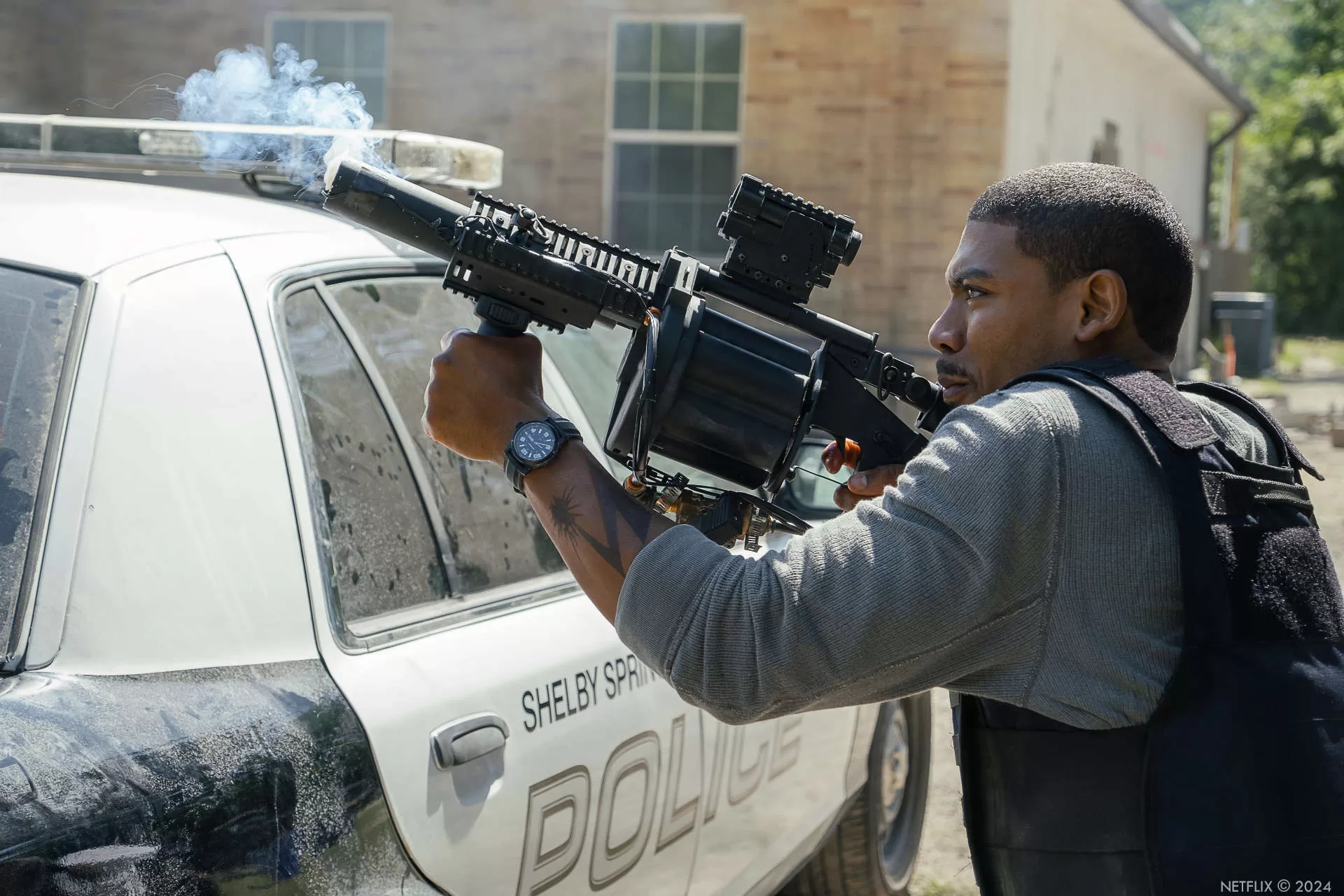
Were there any specific stunts in the film that required particularly complex visual effects work? If so, can you explain why?
On a few stunts, we used that combo of 3D tracking, 3D cameras, projections, and 2D morphing to merge hero stunt takes with hero actor takes.
For the Bike Hit, the A side is the stunt performer getting hit off the bicycle and the bike flying through the frame. The B side is the continuation of the fall with the actor. In addition to merging the hero takes, we also removed the stunt pads, changed the motion of the police car, added an impact and recoil on the bicycle, and comped in the cop at the end from another take.
It was similar with the Dually truck under the bridge. The stunt performer drives into the river, and we switch to the actor climbing up. We ended up shooting it in one continuous take, with a pause to switch stunt performer and actor. With the amount of foliage, moving water, and changing sunlight, I knew it would be a huge challenge for VFX to bridge the two plates, but it was the safest way to shoot the scene. After a ton of detailed morphs and cleanup, we actually ended up merging in a third take of the truck, which entered the water a little more aggressively and helped the intensity of the action.
Can you walk us through the collaboration between the stunt coordinators and the visual effects team?
Keith and Cory were our stunt coordinators, and they were great to collaborate with. We talked over what they had in mind for the stunts and what was necessary for the safety of the actors and stunt performers. We discussed what scenes might need stunt pads, safety wires, pod cars, and face replacements for stunt doubles. We then collaborated to work out how we could fit all the pieces together for VFX.
For the stunt where Terry drives up and t-bones the police car, the main plate was the actual car hit, which had stunt performers for Terry and the Young Deputy. We decided to shoot the actor elements first, before we did any damage to the cars. We were able to have the actors in both cars for the drive up, because it was much slower and the driving stopped well short of the t-bone. So we got Terry’s eyes for the rear view mirror and the Young Deputy’s reaction in the exact same lighting. The final element was a separate setup where Terry jumps out of the car. We shot some overlapping action and used the car’s headrest as a visual wipe to bridge the shots.
How did the team handle the integration of practical effects with digital invisible effects?
I think the VFX team did a great job of mixing the practical with the digital. It helps when you start off with great practical elements from some talented departments. It can sometimes take some experimentation when elements don’t line up exactly as you might like, but our VFX teams were all great about digging in and figuring out clever solutions.
On one particular shot, we wanted to enhance a fake limb that was built to break, but originally had no blood. We added some VFX gore but wanted to make sure our Special Effects Makeup Designer, Stephen Prouty, would like it. So the collaboration continued in post, and we sent it his way. I’m a fan of his work, and I’ve collaborated with him on a few films at this point, so it was great to get a thumbs up from him and know we were all in a good spot.
What were some of the most rewarding moments during the creation of these effects?
I have a few favorite moments. I think the scene where Lann pulls over Terry in the truck is high on my list. When we added in the taser VFX, removed the stunt pads, retimed the background cops, and added the muzzle flashes and blood, the scene really started to come together.
Collaborating with Jeremy on the window bullets hits in this scene was also a lot of fun. He sent over an early edit, but we hadn’t really figured out where or when the specific hits might happen. I temped out some hits to fit with the timing of the edit and the actor movement and sent it his way. We then tossed ideas back and forth to finalize the action for the scene.
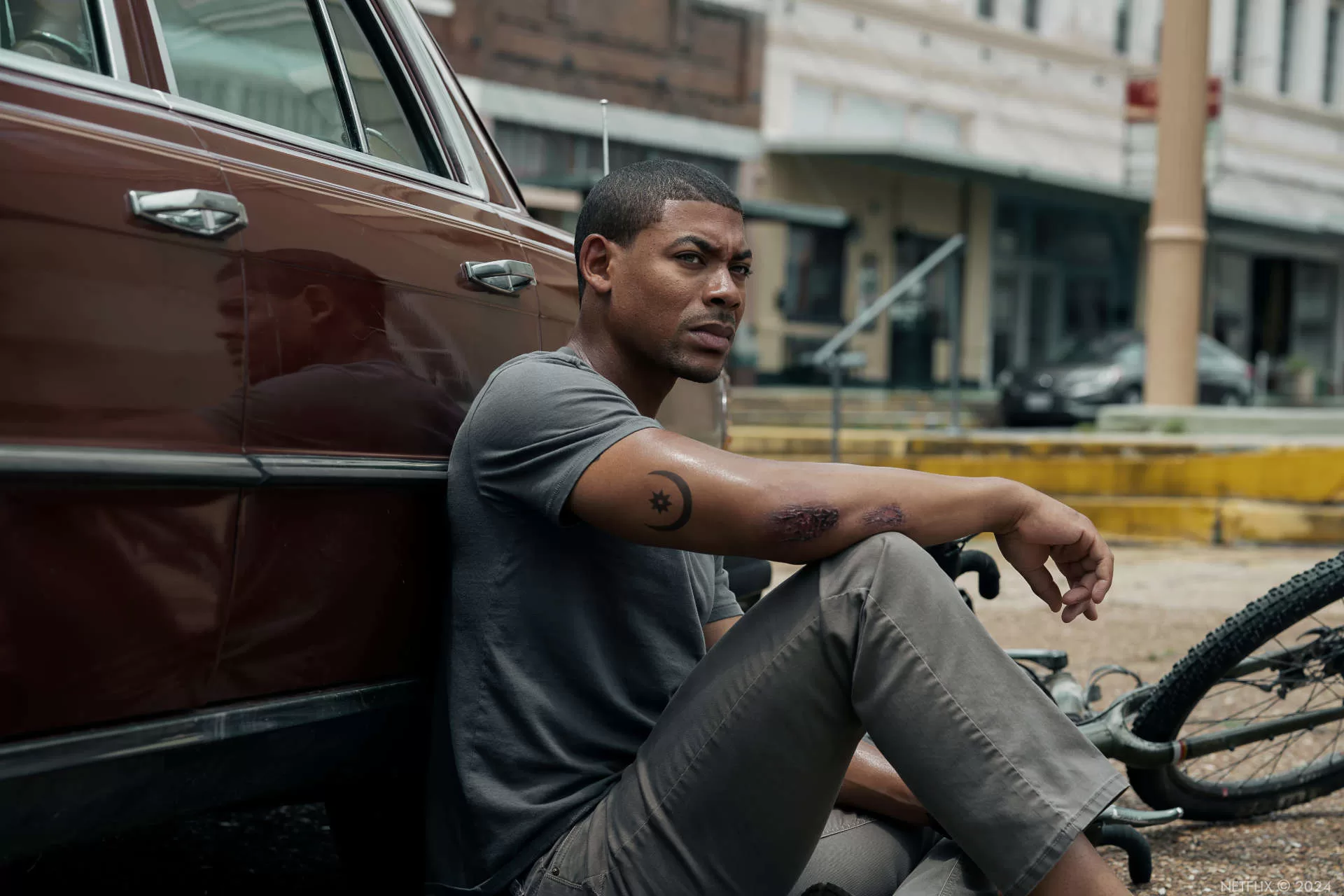
Can you discuss any particular techniques or tricks used to ensure these effects blended seamlessly into the live-action footage?
We implemented so many tricks and techniques, including some of the 3D tracking I’ve mentioned, along with clever composting to tie shots together.
We used a lot of motion vector morphs to match Avid fluid morphs, which I think is common enough these days. We sometimes took it to another level for shots with camera movement or tricky morphs. We mixed in some tracking and split screening – morphing the sections of the frame at different times and rates to hide the effect.
We did a few face replacements throughout the film. While we did scan our actors as a backup, we actually ended up using 2D elements and Keen Tools. In the composites, we also used a combo of blurring, unpremulting, dividing, and then re-multiplying to copy the lighting and color from the source plate and apply it to the face replacement. It might be a common enough technique, but it really helped us get a solid match for some of these shots.
Were there any unexpected technical or creative challenges encountered during the production?
I think there are always unexpected challenges that pop up during the shoot. Sometimes you just need to pull out a plan B, pivot, or roll with a new solution.
One example is a quick shot where Terry is sitting in front of a campfire. The background sky looked great in take 1, but there wasn’t enough light on Terry’s face. Unfortunately, we lost the light, and the sky was too dark for another take. We made the call to relight it later with VFX and kept shooting.
For the shot where Terry pulls the fish out of the river, we couldn’t use a live fish and also found out that the river was so polluted that we didn’t want anyone touching it. I collaborated with the Art Dept to create a large “bowl” that matched the riverbank color. The actor was then able to pull a prop rubber fish from the bowl filled with clean water. After the main take, we shot a rubber fish plate, a clean plate, and a plate with a few splashes. Later on in post, we painted out the bowl, animated the fish, and comped in the splashes to make it all work.
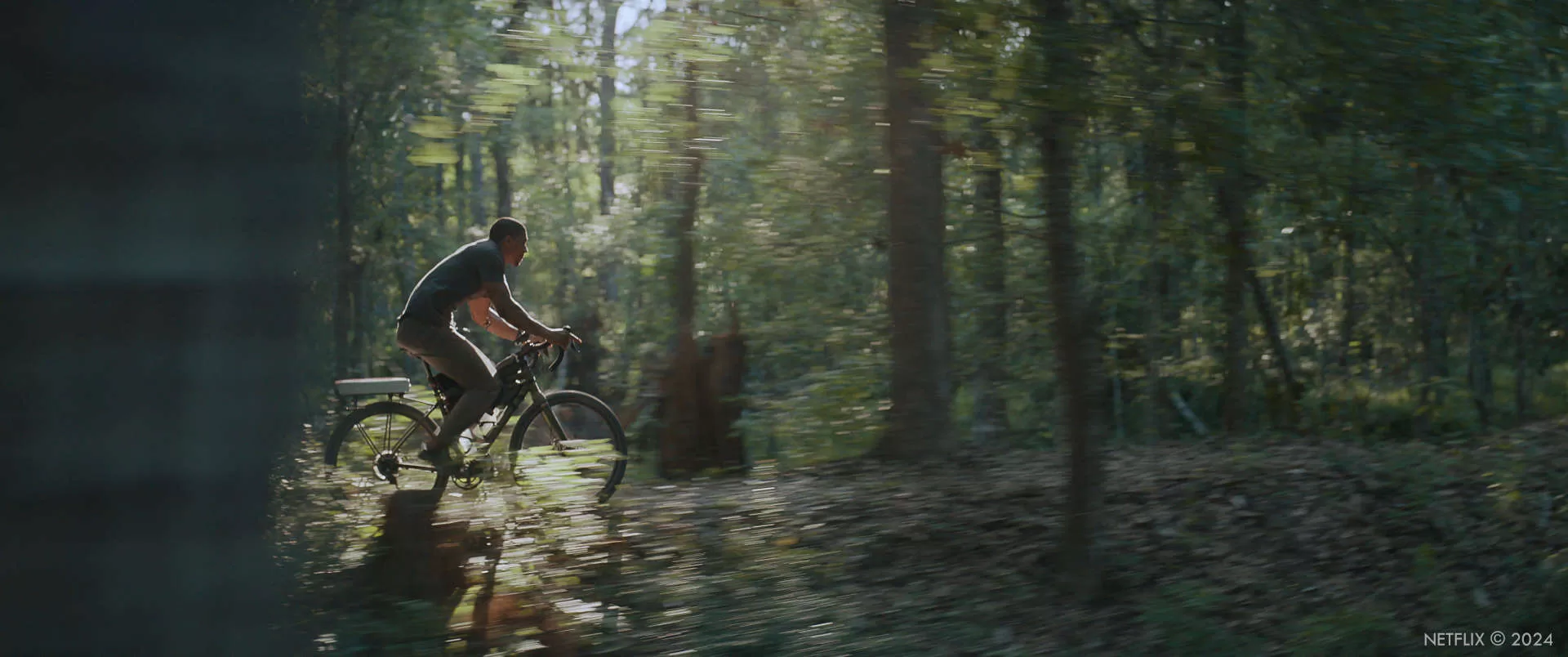
Looking back on the project, what aspects of the visual effects are you most proud of?
I’m proud of some of the tougher shots, likely because I know the amount of work that was put in… the Dually truck driving under the bridge, the Chinese Restaurant oner, and the Bike Hit.
I also really like the fight enhancement we did. There was quite a bit, but a few specific fun shots are: the smoke grenade hitting Deputy Jordan’s chest, adding Lann’s rolling eye to the Special Effects head, and the elbow break.
Some smaller detail shots throughout are also really nice: Terry grabbing the fish, animating the grubs that he uses for bait, adding moving railroad crossing barriers, and adding a helicopter.
How long have you worked on this show?
I received the script in October 2019! There were breaks though, so it hasn’t been full time since then. We tried to shoot in 2020, then 2021, and then were finally successful in 2022. The post schedule was also interrupted with a hiatus for the strikes. So it’s been a long one. The running joke was that Jeremy, I, and a few other of the long haulers should get some sort of graduate degree for the time we spent with this one.
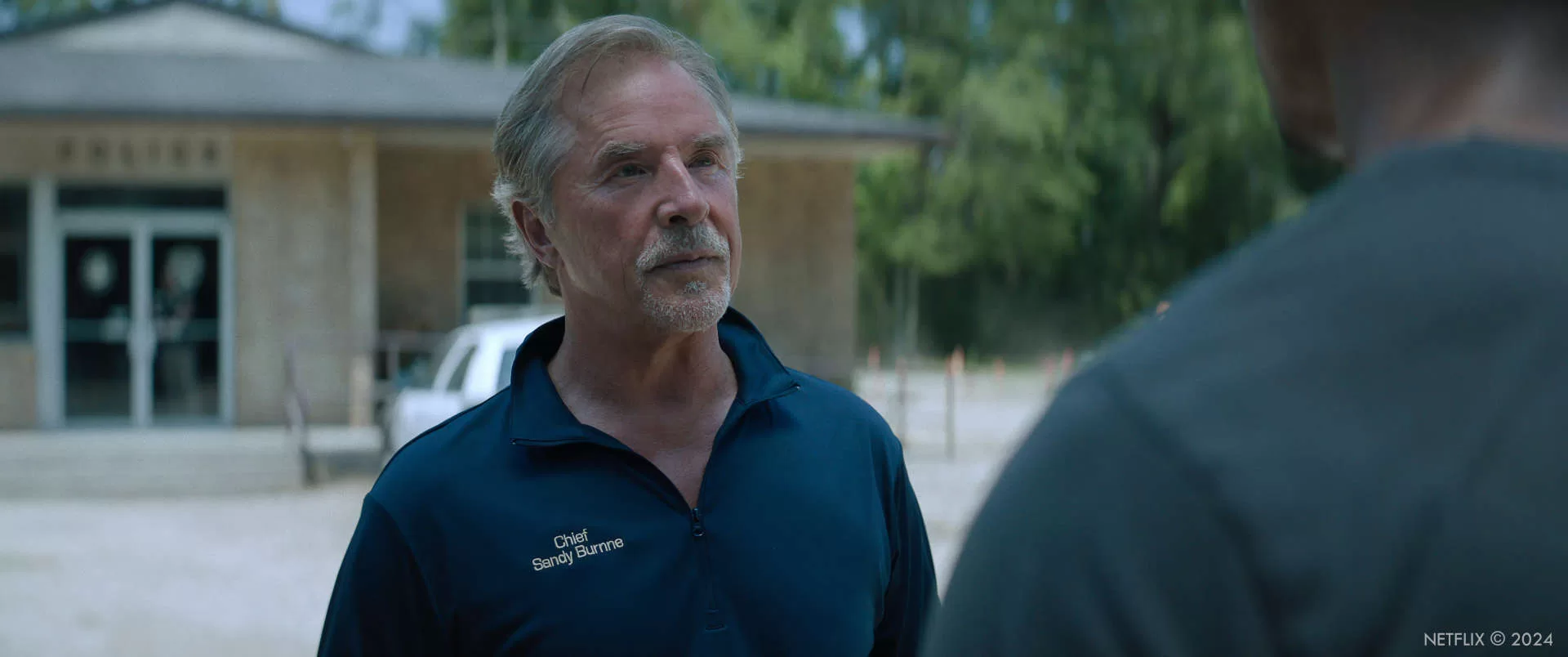
What’s the VFX shots count?
502 shots. I’m glad we were able to fit them all in.
What is your next project?
Right now I’m enjoying some time off after this marathon. I’m not quite sure what my next project will be just yet.
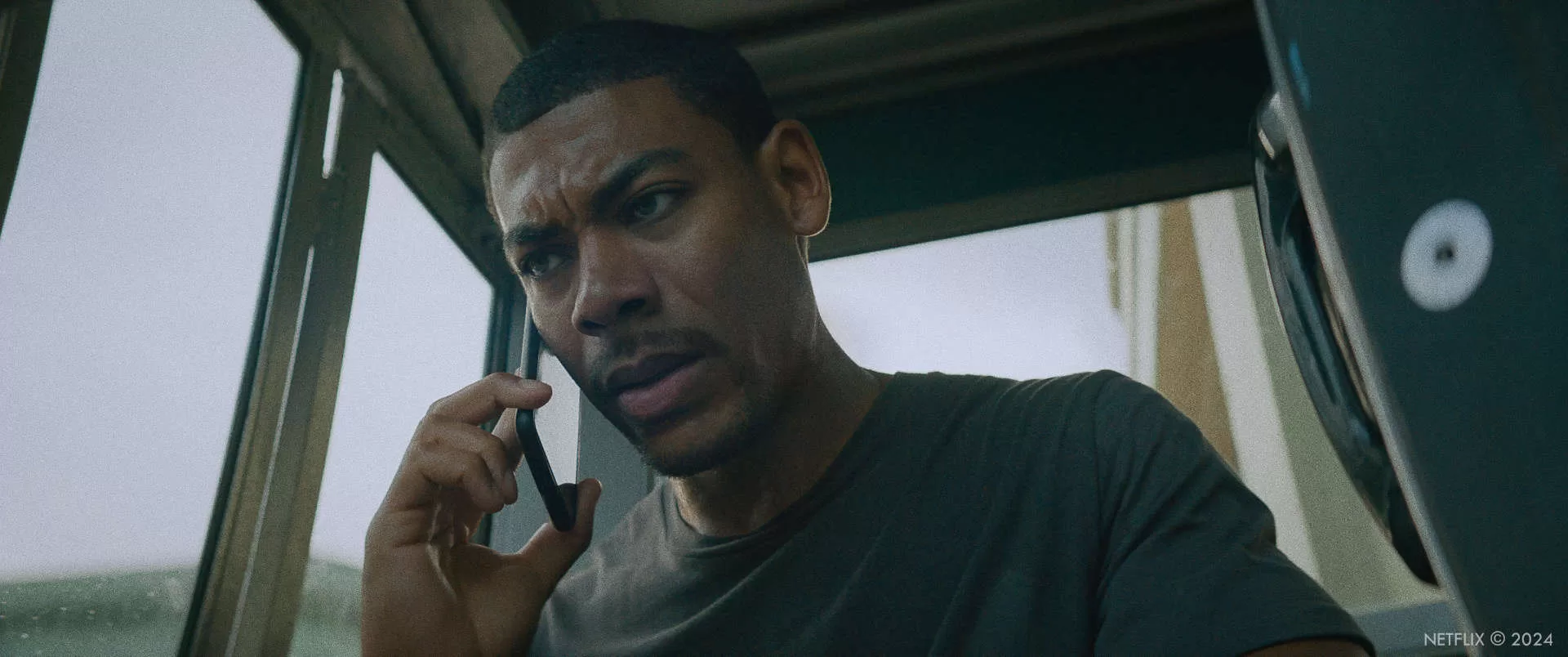
What are the four movies that gave you the passion for cinema?
Ahh, an impossible question for a film nerd. I feel like my list always changes.
Off the top of my head… The Thing (1982), North By Northwest, No Country Old Men, and Before Sunset.
A big thanks for your time.
© Vincent Frei – The Art of VFX – 2024






